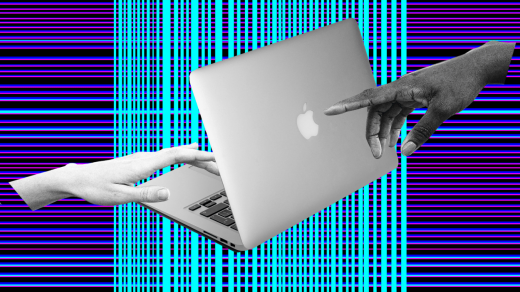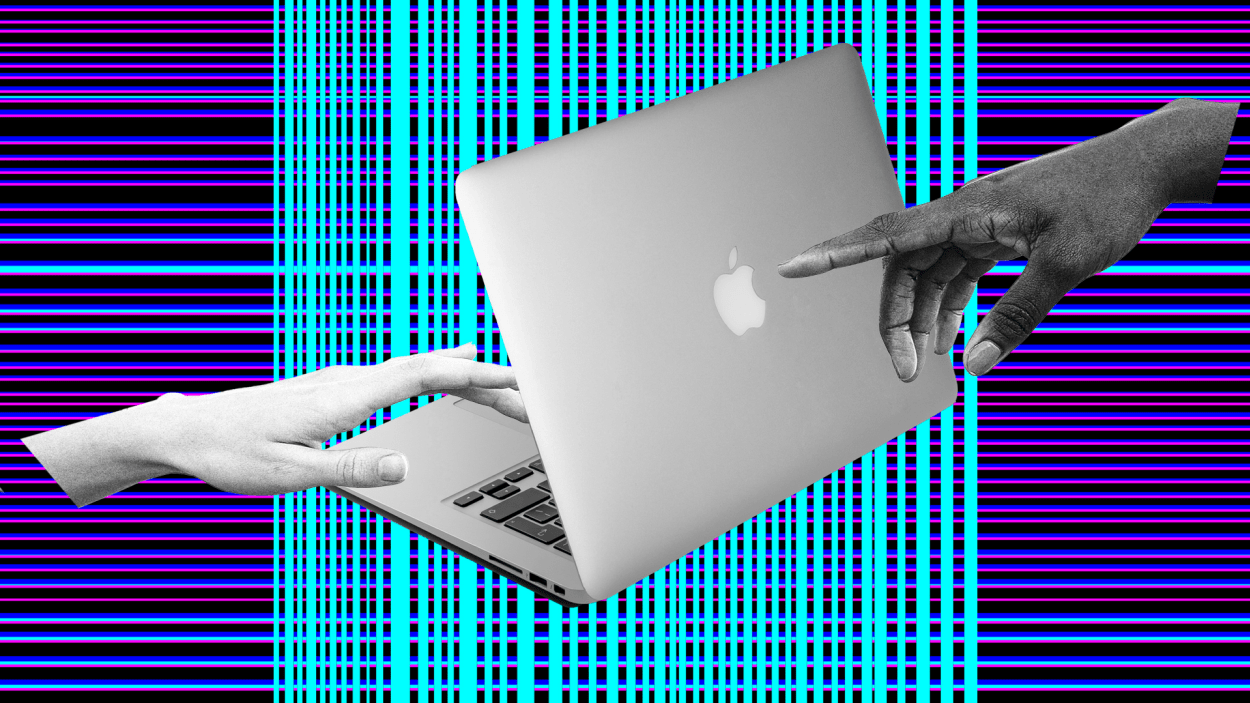If Macs get touchscreens, Apple’s age of intransigence really is over
This story is from Fast Company’s new Plugged In newsletter, a weekly roundup of tech insights, news, and trends from Global Technology Editor Harry McCracken, delivered to your inbox every Wednesday morning. Sign up for it—and all our newsletters—here.
Bloomberg‘s Mark Gurman breaks more major Apple stories than any other reporter. His latest scoop is one of his biggest: After years of insisting that Macs don’t need touchscreens, the company may finally ship a touch-enabled MacBook Pro in 2025.
As I read Gurman’s story, I reflected on the origins of Apple’s long-held opposition to adding touch input to otherwise conventional computer designs such as MacBooks. More specifically, I thought about a product launch I attended at its Cupertino headquarters on October 14, 2008.
Back then, there were rumors of a “MacBook Touch.” During a Q&A session after the event, I seized the opportunity to ask Steve Jobs himself about the idea. As far as I know, no publicly available video exists of the Q&A, which is most famous for Jobs telling another journalist that Blu-Ray technology was “a bag of hurt.” So, I had to rummage around in 14-year-old live blogs to reconstruct precisely what Jobs had to say to me about putting touch on a MacBook.
Bottom line: He said it was an intriguing possibility but not one that Apple thought was a good idea at the time. Jason Snell of Macworld quoted him as saying, “we’ve certainly experimented with it, as you might imagine, and it currently doesn’t make a lot of sense to us.” Gizmodo‘s coverage even indicated that Jobs said that there might be touchscreen Macs someday.
Two years later, at another Apple event, Jobs’s seemingly measured skepticism about touch-enabled Macs had turned into outright rejection. “We’ve done tons of user testing on this, and it turns out it doesn’t work,” he declared, adding that “after an extended period of time, your arm wants to fall off.”
In the years to come, other computer makers would come to a different conclusion. Today, nearly all the Windows laptops at my local Best Buy have touchscreens, except those aimed at gamers. So do most of the Chromebooks. Apple’s refusal to join the crowd has led to articles with titles such as “Why Apple will never, ever make a touchscreen Mac.”
Now, there’s nothing odd about Apple deriding a tech trend up until the moment when it dives into it. In fact, it’s a long-standing ritual. Usually, however, it doesn’t take all that long for it to switch course:
If Gurman is right and we do see a touchscreen MacBook Pro in 2025, what changed Apple’s mind after at least 14 years of arguing that touch would hurt the Mac experience rather than help it? His report says that this computer will “retain a traditional laptop design,” suggesting that it isn’t a wild rethinking of portable computing akin to some of Lenovo’s Yoga Books. Still, that doesn’t eliminate the possibility that Apple has come up with a new twist on touch that allays some of its concerns.
Lots of other factors may have come into play. One obvious inflection point has been the Mac’s transition to chips that Apple designed itself, giving the platform a far greater technological kinship with the iPhone and iPad. Apple-silicon Macs are even capable of running apps designed for Apple’s touch devices. Giving them touchscreens of their own would presumably be a simpler proposition than in the Intel era, with greater potential upside.
It’s increasingly tough to maintain that putting touch on a classic computer would be a disaster given that everyone except Apple has been doing it for years. Touch may not have transformed most Windows laptops and Chromebooks, but it also hasn’t ruined them.
Then there’s the disappointing upshot of Apple’s foray into giving Macs a touch display of sorts: the MacBook Pro Touch Bar, which replaced the machine’s function keys with a touch-sensitive OLED strip. A clear response to the popularity of touch on Windows computers, it ended up irritating people who like function keys without finding a critical mass of serious fans. Arguably, the Touch Bar was worse for the Mac than touchscreens have been for Windows PCs—and so it was no shocker when Apple eliminated it from the newly redesigned MacBook Pro.
Another Apple computing platform that does offer a touchscreen—the iPad—could also have influenced its thinking. By giving iPads cases with high-quality physical keyboards and trackpads, the company created a class of device that seemed poised to take on touch-enabled Windows laptops directly. But as much as some of us like using an iPad Pro as a primary computer, most people aren’t ready to make that jump. And Apple’s own take on how powerful iPads should get has been unexpectedly murky in recent years. The less that the iPad feels like the unchallenged future of Apple, the stronger the argument for a touch-enabled Mac.
Lastly, Apple might have changed its mind . . . simply because it’s gotten better at changing its mind. The biggest news about 2021’s MacBook Pros was that they brought back features that Apple had long ago killed, including MagSafe power connectors, SD card slots, and HDMI connectors. That was a stark reversal from the company’s years-long quest to strip features out of its devices in favor of making them thinner, lighter, and more generally minimalist. The shift in design philosophy seems to have delighted far more people than it displeased.
In retrospect, the first sign that Apple might be warming to the possibility of touchscreen Macs came last October at a Wall Street Journal conference, when software chief Craig Federighi ducked WSJ tech critic Joanna Stern’s question about them by asking, “Who’s to say?” The fact that he didn’t reflexively argue that they’d be a terrible idea indicated that something was up. And Apple’s increasing willingness to question its eternal verities is a healthy development for everyone involved.
(21)



